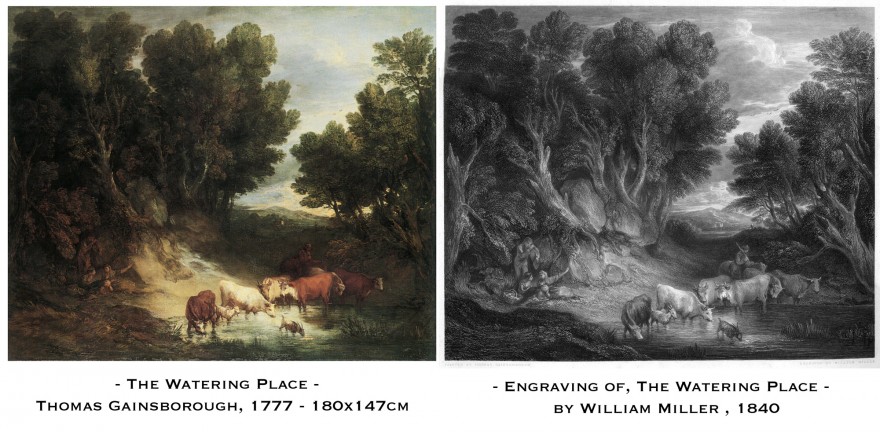I wanted to start a new series looking at classical art on my journal, as I get a lot of my inspiration by studying the masters. It makes me study line and tone it a broad since instead of merely by what’s the popular fad of today.
Here’s Thomas Gainsborough‘s, The Watering Place from 1777. You’ve probably seen iconic work by Gainsborough in paintings like The Blue Boy. I also find myself wondering what he thought of Americans at this at this time, as the Revolution was now on.
It’s currently on display at National Gallery in London at at over 70 inches it will be quite impressive, reminding me once again why a wall piece can take an image from a little print to a piece of timeless fine furnishing.
Next to the painting is a beautifully done engraving of it made by William Miller many years later. It some ways I think the detailed beauty of the monochrome engraving is more impactful that the original. But both are beautiful and I’m guessing we’re seeing some fading the the painted work from how it was originally intended by Gainsborough.
There’s a simplicity here. Yet there’s also a subtle complexity. The cattle watering are clearly the subject, but as you look closer you see many details of supporting cast. The people relaxing under the trees, the distant farms, the birds in the sky. There’s something to be learned from this pieces that was praised by critics when it released.
What are your thoughts and what’s your favorite classical art this month.
Gav

